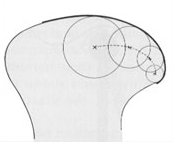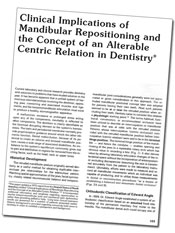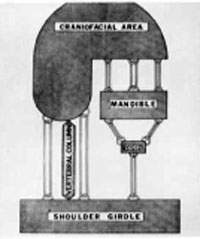

The jaw joint (or temporomandibular joint) is not a fixed hinge, but a more complex structure where the location of the axis of rotation changes and simultanously translates as the jaws opens.

Meet Philip H. Levy, DDS
Developer of the "Levy Lingual Shelf," and a noted lecturer, teacher and clinician, Dr. Levy has made an intensive study of the stomatognathic system.

A 22-page monograph by Dr. Philip Levy explanding upon his presntation in the Symposium on "An Alterable Centric Relation In Denistry." Includes case studies of patients and follow-up care for up to 11 years post-treatment.

Dr. Philip Levy was a Guest Editor for a Symposium on "An Alterable Centric Relation In Denistry" published in the July 1975 issue of the Dental Clinics of North America.
The issue includes 10 articles contributed by respected educators and researchers in the fields of physiology, anatomy, endocrinology, and history.
“Static Centric Relation” Can Be Useful
The concept of static centric jaw relation can be useful in a few limited applications, for instance it provides a reference point for fitting dentures in edentulous patients. However, rigid adherence to centric relation (CR) as fixed and unalterable stands as a barrier to functional jaw orthopedic treatment, such as presented in this website’s Monograph. This manner of treatment, which alters and re-positions the mandible and changes the position of the condyles in the fossa, frequently promising relief for patients suffering temporomandibular disorders. Obviously it is wrong to withhold physiologic treatment from patients, simply because the life-changing treatment available is at odds with an outdated principle of dentistry. It is also unconscionable to withhold proper care, in order to protect some dentists and/or oral surgeons who may be at risk of lawsuits brought by patients whose condition was made worse by treatment rendered.

Factually, the TM joints are the receptors of mandibular positioning determinants and not the initiating determinants of mandibular movements. Centric relation is alterable and it changes as the dentition changes.
The orthodontist’s unique opportunity to correct maxillomandibular mismatches, and the associated muscles and temporomandibular articulation, becomes routinely feasible by proper tooth movement and the reshaping of the dental arches in a manner that intimately involves the patient’s occlusal proprioception.
Dentofacial orthopedists routinely work with the relationship between malpositioned jaws (dental malocclusion) and TMJ disorders by changing the mandibular posture -- thereby inducing or eliminating symptoms of a TMJ disorder virtually at will.
Orthodontic Treatment Does Not, Per Se, Cause Or Cure TMJ Disorders.
However, orthodontic treatment has the potential to do either, depending on whether the treatment enhances physiological homeostasis or produces physiologic insult. It’s time for the fixed-jaw school of orthodontics to wake up and claim ownership of their unique ability to help patients with TMJ disorders, once they have abandoned the myth of a static centric relation and embraced physiologic treatment concepts.
Why the Resistance to an Alterable Centric Relation?
The proposition of an alterable centric relation was first published in 1975. This initial body of work as compiled and presented by Dr. Levy caused a hue and cry in the profession at that time. These concepts were ferociously fought by those who had the most to lose. Indeed, the potential for lawsuits made the stakes monumentally high.
A fog of words about CR has been generated to obscure the truth. Within the profession, “dental experts” of every stripe debate “how many fairies can dance on the head of a pin” and ignore documented cases of the efficacy of mandibular repositioning.
The twisted logic of those who would cling to an outdated concept of static centric relation was summed up by one of the contributors to The Dental Clinics of North America, July 1975 issue:
“The clinician is urged not to convert the articulator into another Procrustean Bed.”
Melvin L. Moss, D.D.S., Ph.D.
Professor and Former Dean
School of Dental and Oral Surgery
Columbia University, New York, NY
The concepts at the heart of physiologically-based dentistry have taken root in dental practices across America, in Europe and around the world. (You can find links to some groups in the “Resources” section of this website.)
Now the Real Work Begins!
The myth of a static centric relation presented as a physiologic entity continues to be taught in dental schools, even though this manmade “article of faith” has changed many times over the years -- and there is still no consensus of what/where this is.
It’s time for vested interests to step aside and stop the professional infighting over technical minutiae. It’s time for progressive prosthodontists, orthodontists and all dentists to read Dr. Levy’s Monograph and use it as a springboard to bring their own evidence-based discoveries to the practice of dentistry. More important, this evolution of dentistry will have a life-changing effect on the lives of thousands of patients worldwide.







